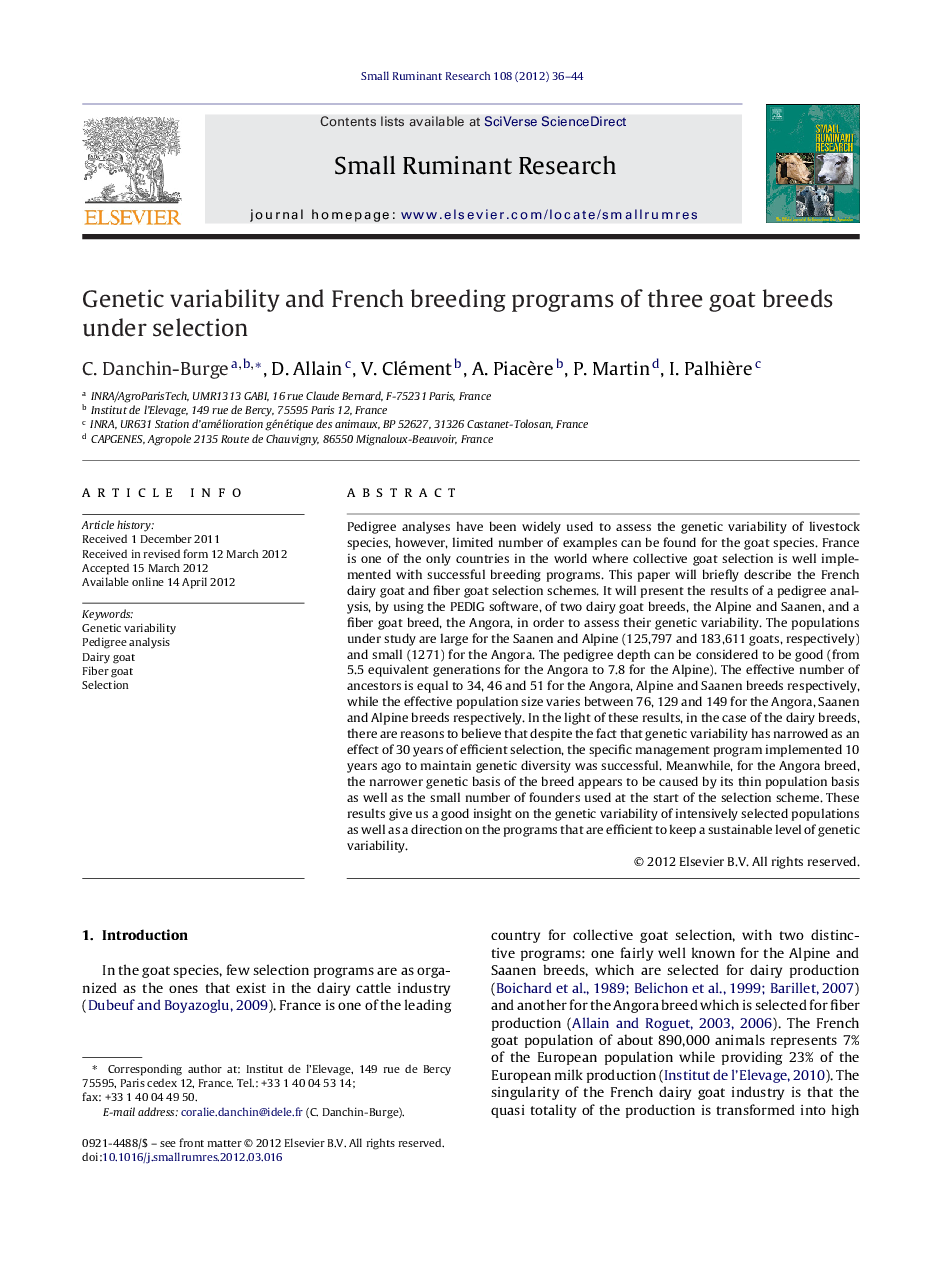| Article ID | Journal | Published Year | Pages | File Type |
|---|---|---|---|---|
| 5796231 | Small Ruminant Research | 2012 | 9 Pages |
Pedigree analyses have been widely used to assess the genetic variability of livestock species, however, limited number of examples can be found for the goat species. France is one of the only countries in the world where collective goat selection is well implemented with successful breeding programs. This paper will briefly describe the French dairy goat and fiber goat selection schemes. It will present the results of a pedigree analysis, by using the PEDIG software, of two dairy goat breeds, the Alpine and Saanen, and a fiber goat breed, the Angora, in order to assess their genetic variability. The populations under study are large for the Saanen and Alpine (125,797 and 183,611 goats, respectively) and small (1271) for the Angora. The pedigree depth can be considered to be good (from 5.5 equivalent generations for the Angora to 7.8 for the Alpine). The effective number of ancestors is equal to 34, 46 and 51 for the Angora, Alpine and Saanen breeds respectively, while the effective population size varies between 76, 129 and 149 for the Angora, Saanen and Alpine breeds respectively. In the light of these results, in the case of the dairy breeds, there are reasons to believe that despite the fact that genetic variability has narrowed as an effect of 30 years of efficient selection, the specific management program implemented 10 years ago to maintain genetic diversity was successful. Meanwhile, for the Angora breed, the narrower genetic basis of the breed appears to be caused by its thin population basis as well as the small number of founders used at the start of the selection scheme. These results give us a good insight on the genetic variability of intensively selected populations as well as a direction on the programs that are efficient to keep a sustainable level of genetic variability.
